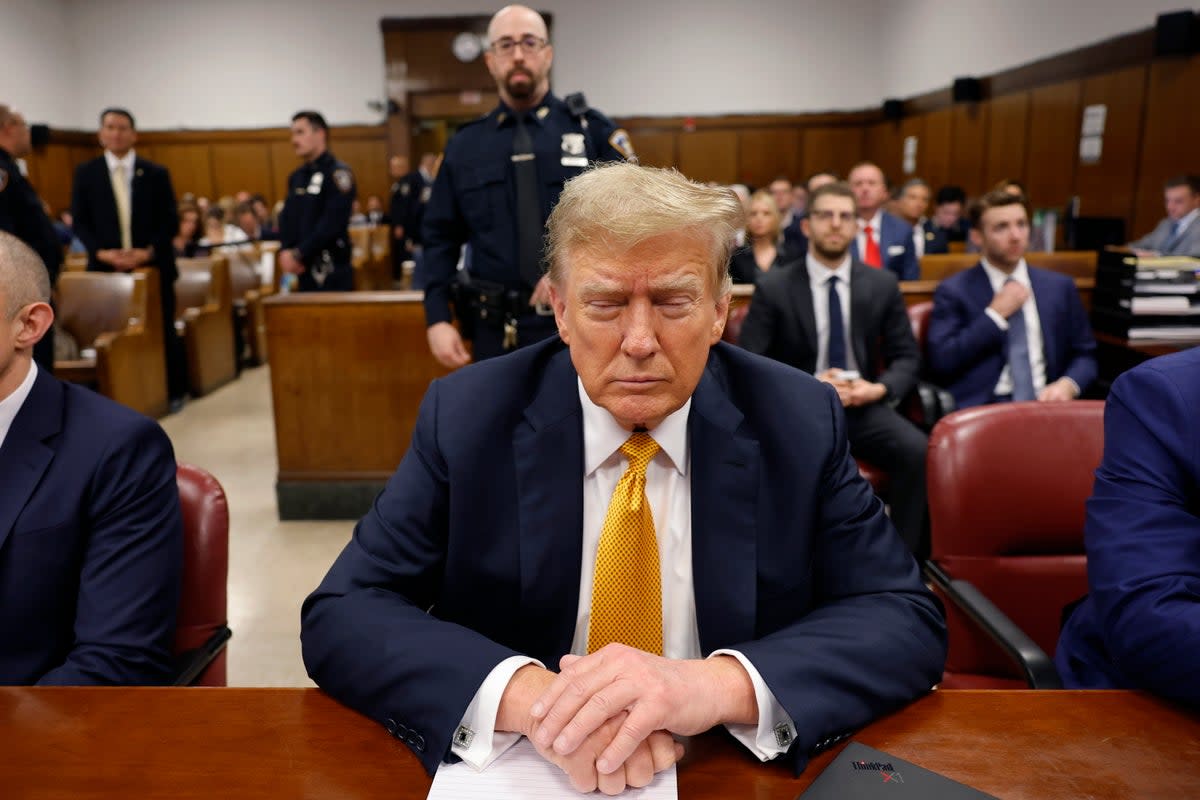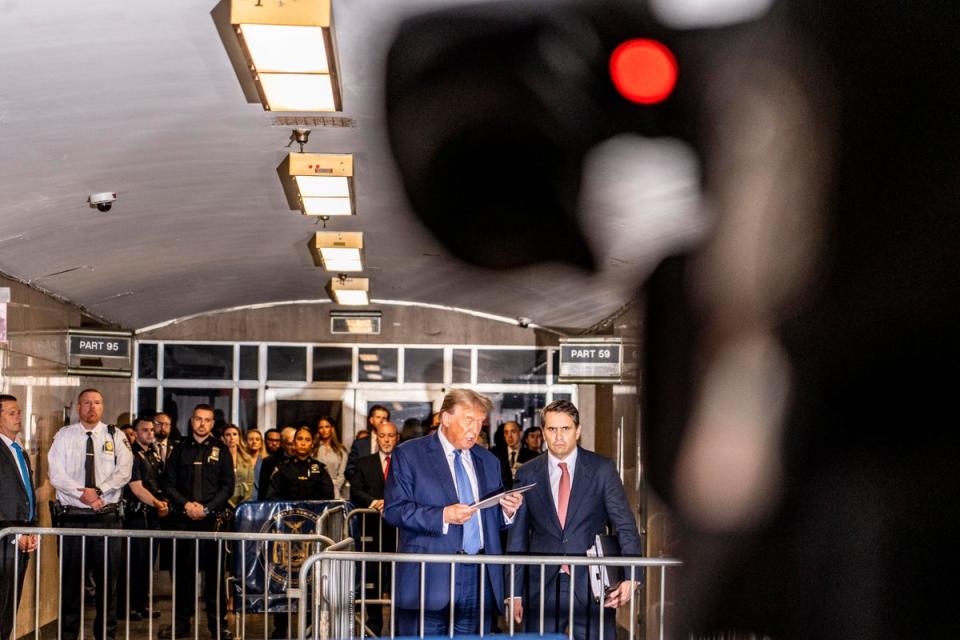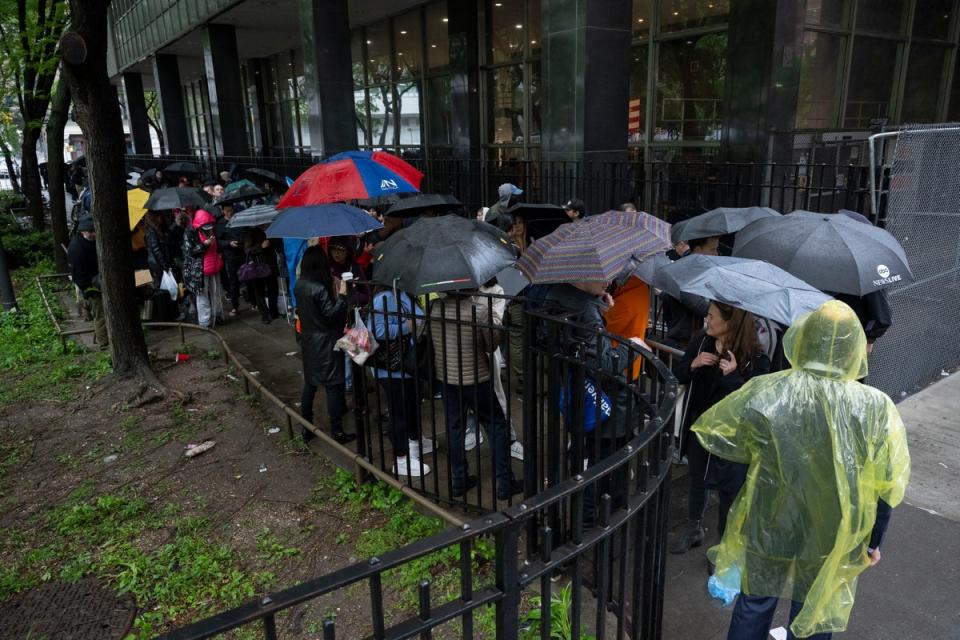Voices: I’ve sat through every day of Trump’s criminal trial. This is what it’s really like

A few dozen reporters raced for the exits the moment New York state court officers let us leave the 15th floor courtroom.
From a stairwell window I could see a plume of smoke in the small park across the street. Down another floor, I could see the crowd forming around it. Down another, an ambulance and police. The smell of gas and burning flesh then hit me as I walked through the front door.
On the fourth and final day of jury selection in Donald Trump’s criminal trial in Manhattan, a man had self-immolated behind police barriers on the other side of the street.
I’ve attended every day of the first-ever criminal trial of an American president, and the harrowing image of a pile of ash and debris on cement just steps away from where dozens of reporters line up every morning to get into the courthouse is seared into my memory, but barely remembered in the surreal spectacle taking place inside.
While cops chased down his neon pamphlets flying in the breeze towards a phalanx of news cameras, a distraught cameraman cursed at the scene in front of him; not because of what he had seen, but because he left for lunch and missed his shot. I asked the court’s trenchcoat-wearing spokesperson if the trial was delayed. He smiled. “I’m headed there right now,” he told me.
After snaking through two lines for metal detectors downstairs, up the elevators back to the 15th floor, through another two rows of bag checks and another set of metal detectors, we filed back into the courtroom before the former president trudged inside and plopped himself at the defense table.
There, we continued to bear witness to a silent and tired Trump, who slouches, stares and keeps his eyes shut for six to seven hours a day, three to four days a week — a view that’s been afforded to only his entourage and the handfuls of attorneys, court officers, journalists and members of the public allowed inside.
He lumbers in and out of the court, sits briefly by himself at the defense table before his attorneys join him, then keeps his eyes closed for most of the day. His mouth falls open occasionally, before he appears to snap awake and scrunch his face as if he’s listening harder. He sinks into his chair and disappears, barely a witness to his own trial.

Getting there takes some time and patience. I get in line across the street before sunrise behind a few other reporters and professional line holders who make $50 an hour to sleep in camp chairs, personal tents and blankets for overnight shifts, paid by larger media networks to guarantee a spot inside. After we’re allowed inside around 8.30 am, I find a seat in one of the rows of wood benches inside an adjoining courtroom with space for roughly 100 people, watching next door’s closed-circuit broadcast on three large TV screens.
We’re joined by a motley crew of everyday citizens eager to witness history up close. In the public line next to us were retirees visiting their daughter during college graduation, a California attorney on vacation who couldn’t resist a courtroom, and high school students skipping class.
And then there were the returning characters. One man with backpacks made out of clocks said he was hoping to sell trial body language information to online betting sites. A pair of Trump-supporting Chinese women in USA-branded hats and apparel unfurled an American flag. John McIntosh, who lugged around a suitcase, used the lines to collect the thousands of signatures he needs to get on the ballot for US Senate.
Sylvia Achee walked up and down the line carrying a handbag-sized speaker playing her husband D-Achee’s song “Liars Must Go” while handing out printed-out lyric sheets. In the small park on the other side of the fence, a woman blew a shofar and played CeCe Winans’ “Come Jesus Come” from her phone and into a bullhorn.

Inside the courtroom, boldface media names — like CNN anchors Jake Tapper and Kaitlan Collins — sat alongside veteran court reporters and exhausted print journalists operating on little sleep. During her one-day visit, I sat next to Fox News personality Jeanine Pirro, who filled a notebook with handwritten notes before she went on air to rip into Stormy Daniels. A few days later, the former president stood in the hallway and read one of her statements calling the judge a “fool.”
More than a dozen New York court officers direct the steady flow of foot traffic, but it’s Mr Trump’s presence that sets the rules. While he’s on the floor, unloading grievances and barking at the small pool of reporters and cameras stationed in a barricaded pen in the hallway, steps away from the men’s bathroom, we’re effectively forced to shelter in place.
When he’s inside, we’re free, and he goes right back to sitting at the defense table, mute and staring at nothing, out of view of the rest of the world, except for us.

 Yahoo News
Yahoo News 
